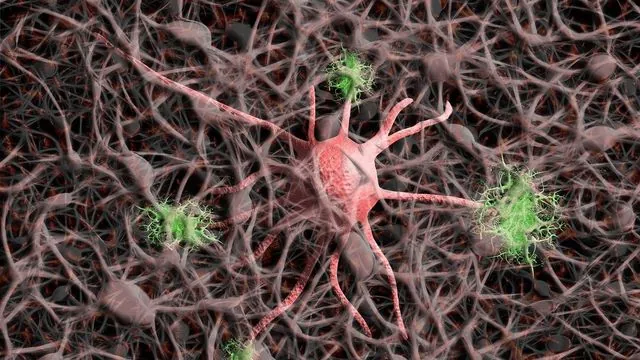
Revolutionary Tool Identifies Cells Linked to Diseases, Paving the Way for Breakthrough Treatments!
2025-04-07
Author: Sarah
Revolutionary Tool Identifies Cells Linked to Diseases, Paving the Way for Breakthrough Treatments!
In the intricate symphony of human biology, cells collaborate seamlessly to maintain our health. However, even the smallest disruption can lead to significant health issues. Recognizing the critical role certain cells play in disease, researchers at the Gladstone Institutes have created an innovative computational tool called CHOIR, which stands for "Cluster Hierarchy Optimization by Iterative Random Forests." This groundbreaking tool enhances our ability to identify "off-key" cells—those that may contribute to various diseases.
Disrupting the Harmony: The Need for CHOIR
CHOIR offers a sophisticated solution to longstanding challenges faced by scientists in cell analysis. Traditional tools often struggle to accurately identify rare cell types or may incorrectly classify biologically similar cells as distinct entities. According to Ryan Corces, PhD, a researcher at Gladstone, CHOIR transcends these limitations by providing precise identification of rare cell populations, essential for addressing diseases that arise from nuanced cellular changes.
“Using this new tool, we can pinpoint cells that influence health and disease, which may have gone unnoticed otherwise,” notes Lennart Mucke, MD, co-author of the study published in *Nature Genetics*. This insight is crucial for developing targeted therapies.
The Birth of CHOIR: A Graduate Student's Quest
The inception of CHOIR can be traced back to Cathrine Sant, PhD, who began her project while tackling the complexities of Alzheimer’s disease. Desiring to explore diverse cell types linked to the condition, she recognized that existing tools had significant limitations. Many required subjective decisions that could bias results and stifle novel discoveries.
Frustrated, Sant joined forces with Corces to craft an unbiased statistical methodology. The result is CHOIR, which can analyze various tissue types from human and experimental models, offering a user-friendly experience for scientists.
How CHOIR Works: A Seamless Innovation
The mechanics of CHOIR include a machine learning framework capable of handling data from multiple single-cell analysis methods, encompassing RNA, DNA, or protein types. What sets CHOIR apart is its robust protective measures against common analytic pitfalls like underclustering and overclustering, which can mislead researchers.
Furthermore, while many analytical tools assume cell populations are uniform in size, CHOIR acknowledges the natural variability in cell abundance, enabling it to excel in identifying both common and rare cell types.
Proven Success Across Various Sciences
The efficacy of CHOIR has been thoroughly tested against other popular analysis tools, outperforming 15 competitors regardless of whether the samples came from brain tissue, blood, or cancer cells. The results are promising; CHOIR routinely identifies distinct cell types that other tools overlook.
As Corces explains, “Being able to rely on CHOIR’s default settings eliminates biases introduced by subjective adjustments, ensuring that findings are reproducible across laboratories.”
Armed with CHOIR, researchers are now advancing studies in Alzheimer's, with Sant and her team focusing on specific brain cells associated with decreased tau protein levels as a potential treatment path. Other teams at the Gladstone Institutes are using CHOIR to delve into cardiovascular health, neurodegeneration, and immune responses—all critical areas for future therapeutic interventions.
The Future of Disease Research
With its remarkable capabilities, CHOIR is set to revolutionize the landscape of biomedical research, providing scientists the tools to identify and target specific cell types involved in diseases. This development is expected to accelerate discoveries in various fields including neuroscience, immunology, and cancer research.
As the scientific community continues to embrace single-cell data analysis, CHOIR stands out as an essential tool that can drive forward innovations in diagnosing, treating, and ultimately preventing diseases.
Stay tuned for more breakthroughs as researchers leverage this powerful tool to unveil the mysteries of cellular health and disease!


 Brasil (PT)
Brasil (PT)
 Canada (EN)
Canada (EN)
 Chile (ES)
Chile (ES)
 Česko (CS)
Česko (CS)
 대한민국 (KO)
대한민국 (KO)
 España (ES)
España (ES)
 France (FR)
France (FR)
 Hong Kong (EN)
Hong Kong (EN)
 Italia (IT)
Italia (IT)
 日本 (JA)
日本 (JA)
 Magyarország (HU)
Magyarország (HU)
 Norge (NO)
Norge (NO)
 Polska (PL)
Polska (PL)
 Schweiz (DE)
Schweiz (DE)
 Singapore (EN)
Singapore (EN)
 Sverige (SV)
Sverige (SV)
 Suomi (FI)
Suomi (FI)
 Türkiye (TR)
Türkiye (TR)
 الإمارات العربية المتحدة (AR)
الإمارات العربية المتحدة (AR)